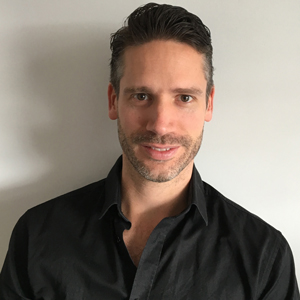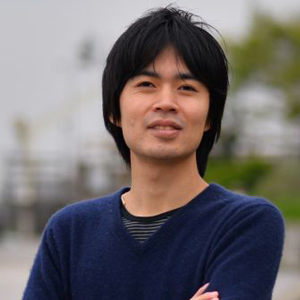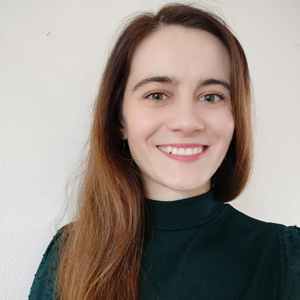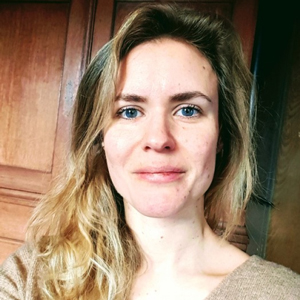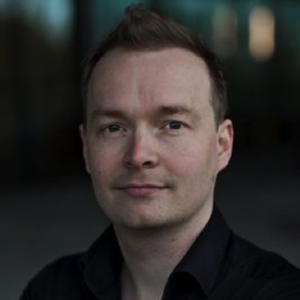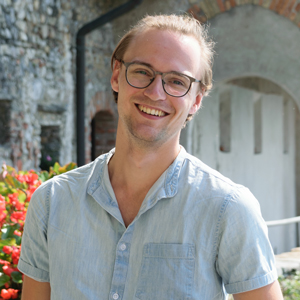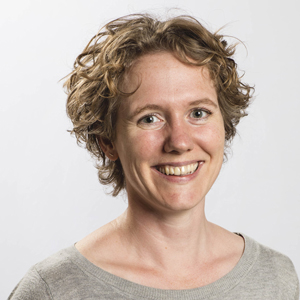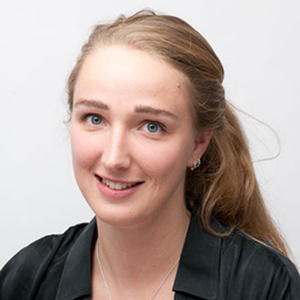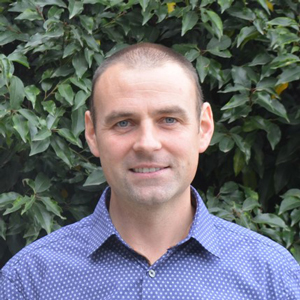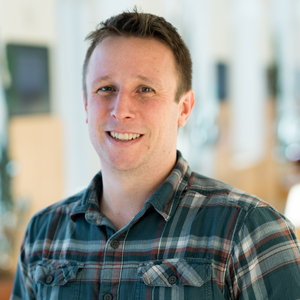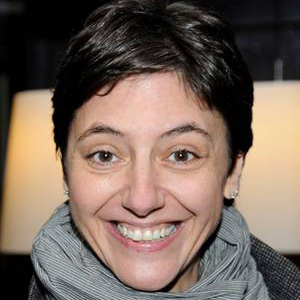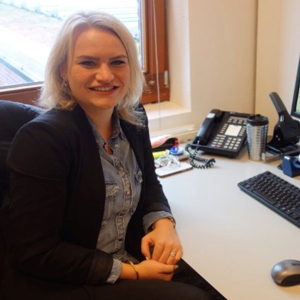



Remember our
DNM 21 5K walk-run »»
All times shown in the programme are
Right now, it is HH:mm (dd mmm 'YY) in Amsterdam.
For more details, including the title of talks and poster sessions, please check the Programme »»
12:50 General remarks and opening by Chair
13:00 Plenary Session: Keynote Lecture
Session 1: Keynote Lecture
Chair: Harm Krugers (Amsterdam)

Regina Marie Sullivan
New York, NY, USA
Neurobiology of infant attachment: Fear
14:00 Coffee break - posters
14:30 Parallel Sessions A
Session 2: Regulators of the memory engram
Chairs: Marloes Henckens (Nijmegen) & Harm Krugers (Amsterdam)


One of the outstanding fundamental questions in modern neuroscience is how and where memory is physically stored in the brain. Recent development of memory engram technologies now allows for the identification and subsequent manipulation of components of specific memory engrams in particular brain regions. Cell ensembles recruited into the engram have been shown to be both sufficient and necessary for memory recall. Recent research has employed this technology to probe fundamental questions of memory consolidation, differentiating between mechanisms of memory retrieval from the true neurobiology of memory storage. A better working knowledge of the processes that are involved in encoding, consolidation and retrieval of specific memories could shed light on diseases that have memory-related alterations as one of their core hallmarks, including stress-related disorders like post-traumatic stress disorder (PTSD). Considering the importance of, and the recent increase in studies revolving around the memory engram, we propose to host a session covering the latest research in this field.
Magdalena Sauvage
Magdeburg, Germany
Michel van den Oever
Amsterdam
Kübra Gülmez Karaca
Nijmegen
Marloes Henckens
Nijmegen
Sylvie Lesuis
Toronto, Canada
Session 3: Unraveling the biological mechanisms of aggressive behavior using complementary translational models
Chairs: Mandy Meijer (Lausanne, Switzerland) & Barbara Franke (Nijmegen)


Destructive and maladaptive behavior causes a huge burden on society, families and individuals. Aggressive behavior is associated with neurodevelopmental disorders, and so far there are no effective interventions. This is mainly due to a limited understanding of underlying mechanisms, and integration of different approaches, including model systems, new paradigms for human studies, and improved gene x environment analyses seem promising towards improving this knowledge. This session highlights the need for multidisciplinary research and exemplifies the successful use of complementary models.
João Rodrigues
Lausanne, Switzerland
Nina Roth Mota
Nijmegen
Mandy Meijer
Lausanne, Switzerland
Jenny van Dongen
Amsterdam
Fiona Hagenbeek
Amsterdam
Session 4: Capture brain diseases on a chip
Chairs: Svetlana Pasteuning-Vuhman (Amsterdam) & Nael Nadif Kasri (Nijmegen)


Advances in microfluidic technology and stem cell biology enable the creation of a small functional unit of the brain or spinal cord such as blood brain barrier or neuromuscular unit in 3D. This state-of-the-art technology is very promising to better recapture physiologically relevant disease pathology of a patient, which will facilitate translation of preclinical research to clinics. While this technology is brand new, it is expected to progressively increase our capacity in discovery of new therapies and improve our understanding about underlying disease mechanisms. More importantly, combined with the iPSCs (induced pluripotent stem cells), a patient-specific model can be generated, providing future possibilities of a development towards personalized therapies for brain diseases. This session will give an overview of this technology and its ability to model a variety of neurological diseases such as Amyotrophic Lateral Sclerosis, Epilepsy, Migraine,and Hypoxia.
Tatsuya Osaki
Tokyo, Japan
Monica Frega
Enschede
Eline van Hugte
Nijmegen
Xandor Spijkers
Utrecht
Jean‑Philippe Frimat
Leiden
Session 5: Transcranial magnetic stimulation and neuroscience: converging evidence from neuroimaging
Chairs: Branislava Ćurčić-Blake (Groningen) & Alexander Sack (Maastricht)


Transcranial magnetic stimulation (TMS) is increasingly being used for non-invasive brain stimulation in psychiatry and neurology. Interest in TMS has steadily increased over the years because of its potential to address more precise targets. However, the field is in need of more evidence regarding the neural changes relevant for TMS and/or induced by TMS. Combining different modalities by applying concurrent TMS, EEG and fMRI is one innovative approach that will be highlighted in this symposium. Other approaches involve measuring the effects of theta-burst TMS by fMRI pre- and post-treatment; attempting to enhance TMS effects using priming with tDCS; investigating brain connectivity using TMS and fNIRS, and using EEG for predicting TMS treatment responses in depressed patients. This symposium will present several novel developments in non-invasive brain stimulation technique for revealing the underlying mechanisms and for improving treatment efficacy in neuropsychiatric disorders.
Marie‑Anne Vanderhasselt
Ghent, Belgium
Alexander Sack
Maastricht
André Aleman
Groningen
Dennis Schutter
Utrecht
Branislava Ćurčić‑Blake
Groningen
Session 6: Microglia in health and disease from rodents to humans
Chairs: Kitty Reemst & Aniko Korosi (Amsterdam)

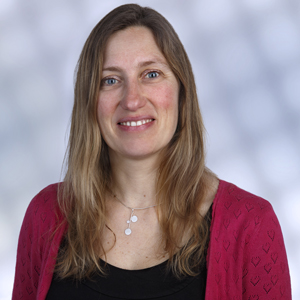
Microglia are the resident immune cells of the CNS. They are plastic cells that can quickly respond to environmental cues by shifts in their phenotype and functions. There is increasing evidence that microglia are crucial for proper development and adult functioning of the CNS. Emerging data indeed indicate that stress and disease state influence microglia phenotypes, and that these changes are key for the stress or disease induced alterations in brain structure and function. Within this session, we will elaborate on microglia development, phenotypes and microglia-neurons interactions in relation to health and disease, using rodent models, human iPSC derived organoids and post-mortem human tissue.
Eric Wohleb
Cincinnati, OH, USA
Chun‑Xia Yi
Amsterdam
Janssen Kotah
Amsterdam
Laura Kracht
Groningen
Tijana Ljubikj
Utrecht
16:00 Coffee-posters-actual poster presenting time
Session 7: Poster session 1
17:00 Workshop Session 8: Alternatives for animal research in neuroscience: how far are we? 20:00 Drinks/Quizzes

Check out the Brain Olympiad event organised by the Hersenolympiade Nederland Foundation!
See your myDNM area (Online platforms section) for access details.
12:30 Parallel Sessions B
Session 9: Assessing human stress reactivity in the lab and in day to day life
Chairs: Judith van Leeuwen (Nijmegen) & Femke Lamers (Amsterdam)


A large body of research has linked stressful life events to the development of many psychiatric disorders. The effects of stress on the brain are therefore extensively studied in both healthy controls and psychiatric patients. Indeed, differences between the groups in neural responses to stress are observed. However, it remains unclear whether responses to laboratory stressors accurately reflect how an individual behaves in a more natural setting. One way to better capture the day to day experiences is to examine thoughts and affect using smartphone-based surveys. Thanks to these ecological momentary assessments, we now have a better understanding of how people behave and feel in their daily lives. However, substantial gaps remain in our knowledge on how to translate the data from one line of research to the other. How can we use our imaging data to better understand how people feel in their daily life and vice versa? Do we need to change our questionnaires to better match our imaging tasks? Do our imaging tasks have ecological validity? How to address the time-dependent effects that stress has on the brain in our EMA questionnaires? Our speakers from both research lines will try to address these questions.
Thomas Vaessen
Leuven, Belgium
Rayyan Toutounji
Nijmegen
Sanne Booij
Groningen
David Rosenbaum
Tuebingen, Germany
Femke Lamers
Amsterdam
Session 10: In search for therapeutic targets for treatment of Parkinson’s Disease
Chairs: Willemieke Kouwenhoven (Montreal, Canada) & Lars van der Heide (Amsterdam)


Parkinson’s Disease (PD) is the second most common neurodegenerative disease after Alzheimer’s Disease. Although Levodopa is no cure for PD, it has been the golden standard in treating the disease since the 1960s. It is time for new therapy. Current research focusses on a better understanding of the PD pathology, allowing for the discovery on novel therapy targets. In this session speakers will discuss their perspective on the molecular and neurochemical changes that occur in the brain and the body during Parkinson’s Disease (PD) and how these changes form targets for existing therapies and posses a potential for the development of novel therapies. This is an interesting session which will cover the fundamental (embryonic) development of dopamine neurons, in vivo PD models, in vitro studies with patient material and finally clinical studies with PD patients.
Lars van der Heide
Amsterdam
Willemieke Kouwenhoven
Montreal, Canada
Pier G. Mastroberardino
Rotterdam
Rob de Bie
Amsterdam
Wilma van de Berg
Amsterdam
Session 11: The axon initial segment: from nanoscale organization to human pathology
Chairs: Amélie Freal (Amsterdam) & Paul Jenkins (Ann Arbor, MI, USA)
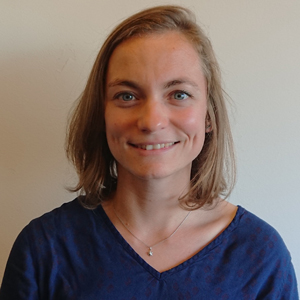

We know for a decade that the axon initial segment (AIS) is crucial for initiating all action potentials. The molecular complexity of this compartment is, however becoming only recently appreciated. In particular resolving the nanoscale organization of the AIS and linking it to the neuron physiology remains a challenge. Recent advances in microscopy, cell biology, high-resolution electrophysiology and the development of new models now makes it possible to deepen our understanding of the AIS. The aim of this session is to bridge cell biology and AIS physiology in health and disease. By bringing together expert labs in the field, we will highlight how the use of innovative tools, approaches and study models are currently revealing exciting new insights into the AIS biology. Notably, we will show how iPSC neurons derived from patients allow to address the pathology of diseases implicating AIS proteins such as schizophrenia or bipolar disorders. We will emphasize how super-resolution imaging of endogenous AIS proteins and high-resolution electrophysiology greatly enhance our knowledge on AIS physiology. Paul Jenkins will show how his lab investigates human mutations of AIS proteins from genetics to pathology in mouse models.
Paul Jenkins
Ann Arbor, MI, USA
Elly Lewerissa
Nijmegen
Amélie Freal
Amsterdam
Feline Lindhout
Utrecht
Naomi Hanemaaijer
Amsterdam
Session 12: Open (Neuro)science: facilitating transparency, collaboration, and reliability in human neuroimaging research
Chairs: Zsuzsika Sjoerds & Dorien Huijser (Leiden)
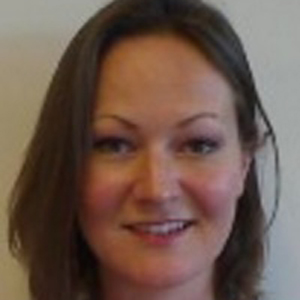

Currently we see that scientific reliability in multiple disciplines is under scrutiny, as several high impact studies cannot be reproduced, partly due to a lack of power and transparency in methodology and analyses. This ‘replication crisis’ has been recognized in the psychological sciences, but now also receives increasing attention in the (cognitive) neurosciences, were advanced neuroimaging techniques offer the chance to obtain large-scale brain data. In response to this replication crisis, a scientific reform, both bottom-up and top-down, that advocates good research practices and Open Science is spreading from the social sciences across the entire scientific field. Open Science makes research more transparent, efficient, and reproducible, overcoming problems that lead to the unreliability of research output, and will likely be part of the workflow for many, if not all, scientists in the near future. It is therefore important for scientists to stay informed about new developments and best practices. In this symposium we gather scientists who apply Open Science practices in their neuroscientific research, and who develop and implement Open Science tools that can be shared with other scientists in the field to freely use.
Remi Gau
Louvain, Belgium
Eduard Klapwijk
Rotterdam
Dorien Huijser
Leiden
Stephan Heunis
Jülich, Germany
Floor van Meer
Leiden
Session 13: Human brain evolution, a multidisciplinary perspective
Chairs: Lianne Scholtens & Roxana Kooijmans (Amsterdam)


What makes us human? In recent evolution, the human brain has gone through a rapid expansion. As a result, the human brain has a large capacity for higher cognitive function and social behavior. The question of exactly what aspects of human brain organization have changed to facilitate these higher-order functions – and whether those changes may have potential implications for mental disorders – is currently a hot topic in the field.
In recent years, Dutch neuroscientists have employed state-of-the art techniques ranging from brain organelles (Moses), high-resolution post-mortem MRI (Freches), connectivity changes with primate brain size (Ardesch), human adaptations in brain connectivity (van den Heuvel) and the study of social behaviors (Massen) to gain better understanding of the mechanisms underlying human brain evolution and its effect on current-day human brain (dis)function.
Approaching the human brain from multiple neuroscientific perspectives, this parallel session will provide a broad overview of current topics in the study of human brain evolution, ranging from genetics and brain organelles to large-scale brain wiring, functional networks important for cognition and social behaviors.
Colette Moses
Amsterdam
Martijn van den Heuvel
Amsterdam
Dirk Jan Ardesch
Amsterdam
Guilherme Blazquez Freches
Nijmegen
Jorg Massen
Utrecht
14:00 Coffee break - posters
14:30 Plenary Session
Session 14: Career & Industry
Chairs: Rudy Schreiber & Jos Prickaerts (Maastricht)
Mark Millan
Glasgow, United Kingdom
A critical look at progress and prospects for personalised-precision medicine for neurodegenerative disorders
15:30 Coffee-posters-actual poster presenting time
Session 15: Poster session 2
16:30 Parallel Sessions C Session 16: Immunometabolism in the brain in health and disease Chairs: Merel Rijnsburger & Chun-Xia Yi (Amsterdam) Over the past decade, the immunometabolism of the brains’ glial cells has become one of the most exciting areas of translational research. Metabolic processes regulate glia responses in healthy individuals as well as during neuro-inflammatory diseases. On cellular, tissue, and organismal levels, emerging evidence demonstrates a complex interplay between metabolism and inflammation that must be precisely regulated to support biological functions. Moreover, immune responses are shaped not only by host metabolites, but also by metabolites derived from the microbiota and infectious agents. The glial cells of the CNS, in particular microglia and astrocytes are important contributors to neuro-inflammation, that is evidently present in several diseases of the CNS including obesity, Alzheimer’s disease and multiple sclerosis (MS). Several disease modifying treatments for neuro-inflammation have been shown to interfere with metabolic pathways in different cell types. Thus, metabolic reprogramming - driving glia towards anti-inflammatory functions by manipulation of their metabolic pathways - may provide new therapeutic opportunities to control excessive inflammation in brain disorders. Joshua Thaler Irina Milanova Felipe Correa da Silva Emma Gerrits Merel Rijnsburger Session 17: The cerebellum as the spider in the web: cerebello-cortical interactions supporting cognition and complex behaviors Chairs: Aleksandra Badura (Rotterdam) & Tomas Knapen (Amsterdam) Polysynaptic connections between cerebellum and neocortex constitute one of the largest neural systems in the human brain. These cortico-cerebellar loops provide the anatomical backbone for cerebellar contributions to a wide array of functional domains outside of motor control, such as working memory, language, social cognition, and cognitive control. Recent advances in basic circuit mapping and functional imaging of cerebello-cerebral connections have revolutionized clinical diagnoses of neurodevelopmental (e.g. autism spectrum disorder) and neurodegenerative disorders (e.g. ataxias).
The goal of this parallel session is to provide a comprehensive overview of the field of cerebellar imaging in humans and experiments in animal models during complex tasks, highlighting the most exciting developments. We propose to organise a session where scientists who use different models discuss their contribution to the understanding of the role of the cerebellum in cognition. Specifically, we will invite two PIs who study human cerebellum using fMRI techniques, two postdoctoral fellows who work with murine models and a PhD student who investigates the cerebelllo-cortical networks in non-human primates. Dennis Schutter Tomas Knapen Ines Serra Catarina Osório Nico Flierman Session 18: Non-coding RNAs as therapeutic targets and biomarkers for brain disease Chairs: Jeroen Pasterkamp (Utrecht) & Noora Puhakka (Kuopio, Finland) Current therapies for many of the neurological disorders are insufficiently effective and there is an unmet need for new biomarkers to predict disease stage and progression. With recent technological advances in exploring the transcriptome, several new classes of non-coding RNAs have been discovered. We will discuss the role of these different classes of non-coding RNAs as therapeutic targets and biomarkers including circular RNAs (circRNA), microRNAs (miRNAs) and transfer RNAs (tRNAs). The speakers in our session investigate the functional role of non-coding RNAs in normal brain and various neurological diseases (AD, TBI and Epilepsy) using state-of-the-art molecular cell biological approaches, patient-derived data and pre-clinical models. Thomas Birkballe Hansen Hannah Walgrave Erwin van Vliet Vamshi Vangoor Noora Puhakka Session 19: Organelle dynamics in neuronal development and plasticity Chairs: Christian Lohmann (Amsterdam) & Ginny Farías (Utrecht) The functional wiring of the brain and its life-long adaptations are fundamental for our lives. Both the formation and plasticity of synaptic connections have been investigated mostly in light of neuronal growth, receptor delivery and turnover; however recent discoveries showed that intracellular organelles and their dynamics are very important for the development, plasticity and health of synaptic connections as well. It has been known for some time that these organelles, such as mitochondria, endosomes and the endoplasmic reticulum, provide energy, buffer calcium and deliver synaptic macromolecular components; however, only now it becomes clear how organelles, their specific localization, structural dynamics and interactions contribute to neuronal development and plasticity. These breakthrough observations have been made possible in particular by the invention of novel live-cell imaging techniques, including super resolution microscopy. Jean‑Michel Cioni Max Koppers Ginny Farías Koen Kole Christian Lohmann Session 20: The human histaminergic system in neuropsychiatric disorders: from animal models to clinical treatment Chairs: Gert Jan Lammers & Ling Shan (Leiden) Both the European Medicines Agency (EMA) and the United States Food and Drug Administration (FDA) approved an H3R-antagonist/inverse agonist compound for the treatment of excessive sleepiness in narcolepsy. This compound currently is also advancing into clinical trials as a potential treatment for Parkinson’s disease and Alzheimer’s disease.
It is known that the neuronal histaminergic system is involved in a number of basic physiological functions, such as the sleep-wake cycle, energy and endocrine homeostasis, sensory and motor functions, cognition, attention, and learning and memory, all of which tend to be severely affected in neuropsychiatric disorders.
The current parallel session presents the alterations in the histamine system, mainly from speakers’ own studies. Changes in the histamine system in neuropsychiatric disorders are discussed, including Parkinson’s disease, Alzheimer’s disease, Huntington’s disease, depression and narcolepsy. William Wisden Ling Shan Gert Jan Lammers Zhong Chen 18:00 Coffee break - posters 18:30 Plenary Session (90 min) Session 21: Prizes (90 min) 


Seattle, WA, USA
Amsterdam
Amsterdam
Groningen
Amsterdam


Utrecht
Amsterdam
Rotterdam
Rotterdam
Amsterdam


Aarhus, Denmark
Leuven, Belgium
Amsterdam
Utrecht
Kuopio, Finland


Milan, Italy
Utrecht
Utrecht
Amsterdam
Amsterdam


London, United Kingdom
Leiden
Leiden
Hangzhou, China
12:30 Parallel Sessions D
Session 22: Nutritional approaches to the prevention and treatment of psychiatric disorders
Chairs: Veronica Begni & Aniko Korosi (Amsterdam)
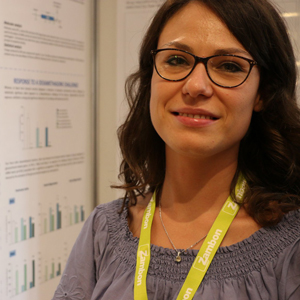

Exciting developing evidence indicates powerful effects of nutrients on the brain. This offers a new therapeutic perspective. In this symposium, we will discuss the role of nutrients in supporting optimal neurodevelopment and in prevention and treatment of a broad range of neurological disorders. We will discuss pre-clinical and clinical evidence of the potential relevance of nutritional interventions as (add-on) strategy to treat these disorders.
Teresa Reyes
Cincinnati, OH, USA
Veronica Begni
Amsterdam
Gijs Kooij
Amsterdam
Esther Aarts
Nijmegen
Hannah Juncker
Amsterdam
Session 23: Trends in neuromodulation
Chairs: Sarah-Anna Hescham & Ali Jahanshahi (Maastricht)
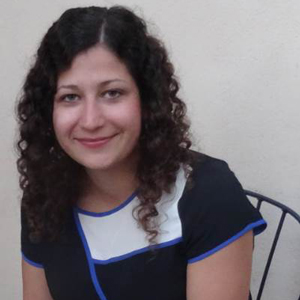

The field of neuromodulation is active, growing and innovative. It has revolutionized the treatment of various neurologic and psychiatric disorders within the past three decades. Advances in neuromodulation seem to be linked to the fact that systemic drug based approaches have not delivered the breakthroughs that the field was looking for, mainly in the field of neuropsychiatric diseases. This led to a downscaling of central nervous system drug activities of major companies. In addition, our increased understanding of the neurobiology of brain disorders from studies in translational models paved the way for the clinical application of, for example, deep brain stimulation. That is why, deep brain stimulation is used in several neurological and psychiatric disorders. Lastly, technological advances in the field of fundamental neuroscience have enabled a more thorough understanding of neural macrocircuitries that play a role in various disorders. These circuitries are currently targeted by experimental neuromodulatory approaches. In this session we will provide a comprehensive perspective on the field of neuromodulation that substantively explores both the essential and innovative topics.
Nir Grossman
London, United Kingdom
Myles McLaughlin
Leuven, Belgium
Jackson Boonstra
Maastricht
Tycho Hoogland
Amsterdam
Sarah‑Anna Hescham
Maastricht
Session 24: Probing and targeting cAMP: from local control of signaling nanodomains to cognitive function
Chairs: Jos Prickaerts (Maastricht) & Tim Vanmierlo (Diepenbeek, Belgium)


The cyclic nucleotide cAMP is a key regulator of cellular differentiation processes. This session aims to present the latest cutting-edge research on cAMP signaling directing CNS plasticity during various physiological as well as pathological conditions. Especially cAMP signaling and its importance in cognitive functions will be highlighted. Also recent advances in technologies, such as new mass spectrometric methods, imaging and structural biology, will be covered as they profoundly changed how these signaling pathways and their dynamics are examined. Until now, interventions focused mainly on directly manipulating the catalytic domain of enzymes involved in the synthesis or degradation of cAMP. Recently, novel avenues to target cAMP signaling are being explored, including protein-protein interactions and post-translational modifications which alter the activity of these enzymes and their interaction with stimulators, activators and inhibitors. Linked to this, also the role of cell-type specific compartmentalization of cAMP signaling will be discussed. It will be evident that the effects on brain plasticity (e.g. neurodegeneration, inflammation and myelination) and consequently cognition depend on cAMP signaling within the specific cell types (e.g. neuronal, microglial, oligodendrocytic). Finally, (epi)genetic control of cAMP signaling is also discussed. Thus we aim to recapitulate the progress being made in targeting localized cAMP signaling in different cell types to stimulate brain plasticity and cognition.
George Baillie
Glasgow, United Kingdom
Ying Xu
Buffalo, NY, USA
Tim Vanmierlo
Diepenbeek, Belgium
Melissa Schepers
Diepenbeek, Belgium
Robbert Havekes
Groningen
Session 25: Brain injury and consequences for sleep and fatigue
Chairs: Jessica Bruijel (Maastricht) & Christian Baumann (Zurich, Switzerland)


There is increasing awareness for the importance of sleep for mental and physical health, in the last years. Sleep has been recognized as a transdiagnostic factor in a large variety of mental health problems. Research has shown a distinctive role of sleep in cognition, processing of emotions, and immune function. Recently it has been discovered that during sleep waste substances are removed from the brain. These findings raised attention for sleep complaints and fatigue among researchers of psychiatric, neurological and somatic disorders. In patients with acquired brain injury, sleep disturbances and fatigue were often neglected, even though these are the most prevalent and persisting consequences of brain injury. Research on the etiology, development and treatment of sleep disturbances and fatigue in brain injury patients is now growing. In addition, health care professionals are now developing new procedures to attend to these problems, with shifts towards long-term behavioral approaches instead of medication. This session will provide an overview of the relation between sleep and fatigue in patients with brain injury, and discuss possible treatment options by presenting results from recent studies.
Christian Baumann
Zurich, Switzerland
Jessica Bruijel
Maastricht
Marthe Ford
Wijk aan Zee
Louise Pilon
Arnhem
Bert Lenaert
Maastricht
Session 26: Human induced pluripotent stem cell models for neuron-glia interaction studies
Chairs: Anne-Marie van Dam & Vivi Heine (Amsterdam)


Human brain disorders are a burden for patients, relatives and society. There is a major force to better understand the pathogenesis of those complex diseases to come to therapeutic targets to intervene in the disease process. Developments in the field of human induced pluripotent stem cells (iPSCs) have realized the production of various types of human brain cells from individuals. These include neurons, astrocytes, microglia and oligodendrocytes expressing the genetic make-up of a diseased or control subject. By using 2D, 3D or organoid cultures of human iPSC-derived brain cells, it is aimed to identify the effect of intrinsic, e.g. genetic, or extrinsic, e.g. inflammation, factors on the individual brain cells as well as on their interaction. In recent years iPSC-based model systems quickly advanced thereby gaining interest for implementation in a wide range of basic and translational studies.
Anna Falk
Stockholm, Sweden
Bas Lendemeijer
Rotterdam
Massimiliano Caiazzo
Utrecht
Marloes Verkerke
Utrecht
Vivi Heine
Amsterdam
14:00 Coffee break - posters
14:30 Parallel Sessions E
Session 27: The neurochemistry of adaptive behavior: new insights from effort, pain, and stress
Chairs: Dennis Hernaus (Maastricht) & Eliana Vassena (Nijmegen)


Humans continuously adapt to unpredictable environments. This, among others, requires two core skills: learning (about which actions lead to good and bad outcomes), and motivation (to pursue good things and avoid bad things). While adaptive behavior is essential, its neurochemical underpinnings remain elusive. This symposium will provide novel mechanistic insights into the neurochemistry of adaptive behavior, integrating computational modeling, neuroimaging, and pharmacology. The presenters’ pre-clinical and human work reveals a central role for catecholamines and opioids in regulating adaptive decisions, with important implications for psychopathology.
Sebastien Bouret
Paris, France
Marieke Jepma
Amsterdam
Henk van Steenbergen
Leiden
Massimo Silvetti
Rome, Italy
Dennis Hernaus
Maastricht
Session 28: Voltage imaging: an all-optical toolbox for direct readout of neural activity
Chairs: Naomi Hanemaaijer (Amsterdam) & Daan Brinks (Delft)


Voltage imaging is an emerging technology in the neurosciences because of its ability to detect single spikes and subthreshold membrane fluctuations bidirectionally. The past decade has shown that imaging membrane potentials in small neurites, such as spines or boutons, improved our understanding of synaptic signaling and action potential propagation. More recently, the imaging of voltage has received a surge of attention; the development and application of improved genetically encoded voltage indicators (GEVIs) has exploded and nowadays GEVIs record neural activity with submillisecond temporal resolution and with genetic specificity, both in vitro and in vivo. The all-optical toolbox for tracking brain activity, also encompassing techniques like light patterning and optogenetics, has rapidly expanded and is becoming established in multiple laboratories in the Netherlands. In this session we will bring together international and Dutch speakers working with voltage indicators to discuss the most recent developments of voltage imaging, from directed genetic engineering of probes to in vivo recordings delivering new insights into neural basis of behavior.
Michael Hoppa
Hanover, NH, USA
Linlin Fan
Stanford, CA, USA
Daan Brinks
Delft
Xin Meng
Delft
Naomi Hanemaaijer
Amsterdam
Session 29: The immune system in neurological disorders
Chairs: Jinte Middeldorp (Rijswijk) & Elga de Vries (Amsterdam)


The neuropathology of CNS disorders such as Alzheimer’s disease and stroke are characterized by an aberrant functioning of the immune system. Yet, this neuro-immune interaction is not only involved in the onset, progression, and clinical manifestation of neurological diseases, but in some cases also plays a protective role in the pathogenesis of various brain disorders. A complex interplay of peripheral immune cells, the blood-brain barrier, and CNS resident immune and glial cells steers the destructive and regenerative capacity of the CNS. Elucidating the underlying mechanisms involved in this neuro-immune interplay is predicted to generate novel leads for future treatments. It is now well established that in several neurological disorders there is an imbalance or aberrant communication between both systems. In our proposed session the latest research on this imbalance will be discussed from both the peripheral and the CNS point of view, and the cross-talk between them. The diseases of focus will be Alzheimer’s disease, stroke and glioma, which all have different etiologies, but important inflammatory components, and a drastic need for novel therapies.
Leila Akkari
Amsterdam
Anu Meerwaldt
Utrecht
Lynn van Olst
Amsterdam
Marianna Bugiani
Amsterdam
David Gate
Stanford, CA, USA
Session 30: Lipids in synaptic function and pathology
Chairs: Yolanda Gutierrez (Utrecht) & Mark Verheijen (Amsterdam)

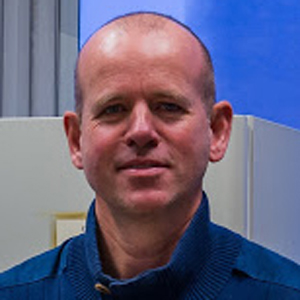
Lipids play a fundamental role in a wide range of cellular processes and are the most abundant components of the brain. Specific lipid species such as cholesterol and phosphoinositides are enriched in synapses and have been directly implicated in the control of synapse development and synaptic plasticity. Particularly, dysregulation of lipid homeostasis perturbs synaptic function and is thought to underlie the neuronal pathology observed in diseases such as Niemann-Pick and Alzheimer’s diseases, further evidencing their relevance for synaptic transmission. With this proposal, we will feature key studies and working projects that are shifting the prevailing focus from proteins to lipids. They will provide a unique global perspective ranging from state-of-the-art techniques to gain insight into synaptic membrane composition, to the influence of lipid metabolism and diet on cognition and for the treatment of different neurodegenerative diseases. Overall, proposed lectures will encompass a multidisciplinary view that will cover all levels from fundamental to applied science, highlighting the key role of lipids in neuronal functioning.
Maria Dolores Ledesma
Madrid, Spain
Rik van der Kant
Amsterdam
Kitty Reemst
Amsterdam
Yolanda Gutierrez
Utrecht
Mark Verheijen
Amsterdam
Session 31: Leveraging on translational prospective approaches to elucidate the biological signature of differential PTSD susceptibility
Chairs: Mirjam van Zuiden (Amsterdam) & Marloes Henckens (Nijmegen)


10-20% of trauma-exposed individuals develops posttraumatic stress disorder (PTSD). To develop effective preventive interventions for PTSD, it is pivotal to increase our understanding of neurobiological mechanisms underlying the differential susceptibility vs resiliency to PTSD by using translational prospective approaches. In this symposium we bring together recent findings of new experimental paradigms in rodents and humans with innovative clinical prospective approaches to share the latest developments in resilience research.
Lotte Hilberdink
Amsterdam
Marloes Henckens
Nijmegen
Floris Klumpers
Nijmegen
Katharina Schultebraucks
New York, NY, USA
16:00 Coffee-posters-actual poster presenting time
Session 32: Poster session 3
17:00 Plenary Session Session 33: Keynote Lecture Chair: Mark Verheijen (Amsterdam) Baljit Khakh Unmasking astrocyte contributions to neural circuit function 18:00 Poster Prizes and Closure DNM 21
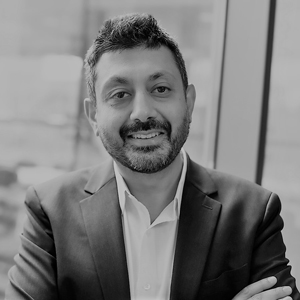
Los Angeles, CA, USA


